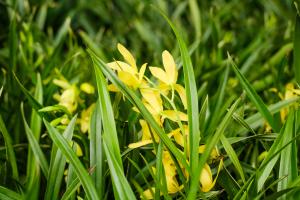What is a Vascular Plant?
Vascular plants, also known as tracheophytes, are plants that possess specialized tissues that enable them to transport water, nutrients, and other vital substances throughout the plant. These tissues, known as xylem and phloem, make up the vascular system of the plant and allow for greater efficiency in resource uptake and distribution. Vascular plants are found in diverse environments all around the world, ranging from deserts to rainforests, and have a wide array of adaptations that allow them to survive and thrive in their respective habitats.
The Characteristics of a Vascular Plant
Vascular plants can be distinguished from non-vascular plants based on several key characteristics. Firstly, they possess specialized tissues called xylem and phloem, which form the plant's vascular system. Xylem is responsible for transporting water and dissolved minerals from the roots to the other parts of the plant, while phloem is responsible for transporting carbohydrates and other organic compounds from the leaves to the rest of the plant. Secondly, vascular plants have true stems, leaves, and roots, which serve to anchor the plant and provide support, as well as to absorb water and nutrients from the soil. Thirdly, vascular plants typically reproduce via seeds, which may be enclosed in a fruit or dispersed through the air or by water.
The Diversity of Vascular Plants
Vascular plants encompass a wide variety of plant types, from towering trees to tiny herbs. Some of the most familiar examples of vascular plants include conifers, ferns, grasses, and flowering plants (angiosperms). Conifers, such as pine trees and spruces, are characterized by their needle-like leaves and cone-shaped reproductive structures. Ferns, on the other hand, are known for their fronds and spore-bearing structures, while grasses are characterized by their long, narrow leaves and jointed stems. Flowering plants, as their name suggests, produce flowers, which then develop into fruits (in the case of angiosperms) that protect and disperse the plant's seeds.
The Importance of Vascular Plants
Vascular plants are essential components of virtually all ecosystems, playing important ecological, economic, and cultural roles. Ecosystems rely on vascular plants to provide the primary source of food for other organisms, to regulate the water cycle, and to help filter pollutants from the air and soil. Vascular plants also serve as important sources of medicine, food, and raw materials for human societies around the globe, and have been used for these purposes for thousands of years. Additionally, many cultural traditions and belief systems are built around the worship and reverence of plants, and the innate beauty and majesty of vascular plants has captivated human imaginations for centuries.
Conclusion
Overall, vascular plants are an incredibly diverse and important group of organisms, with a wide range of ecological, economic, and cultural significance. From towering trees to tiny wildflowers, vascular plants have adapted to survive and thrive in virtually every climate and habitat on Earth. Understanding the characteristics and diversity of vascular plants is an essential step in our quest to better protect and manage the planet's precious natural resources.

 how many times do yo...
how many times do yo... how many planted tre...
how many planted tre... how many pine trees ...
how many pine trees ... how many pecan trees...
how many pecan trees... how many plants comp...
how many plants comp... how many plants can ...
how many plants can ... how many plants and ...
how many plants and ... how many pepper plan...
how many pepper plan...





























